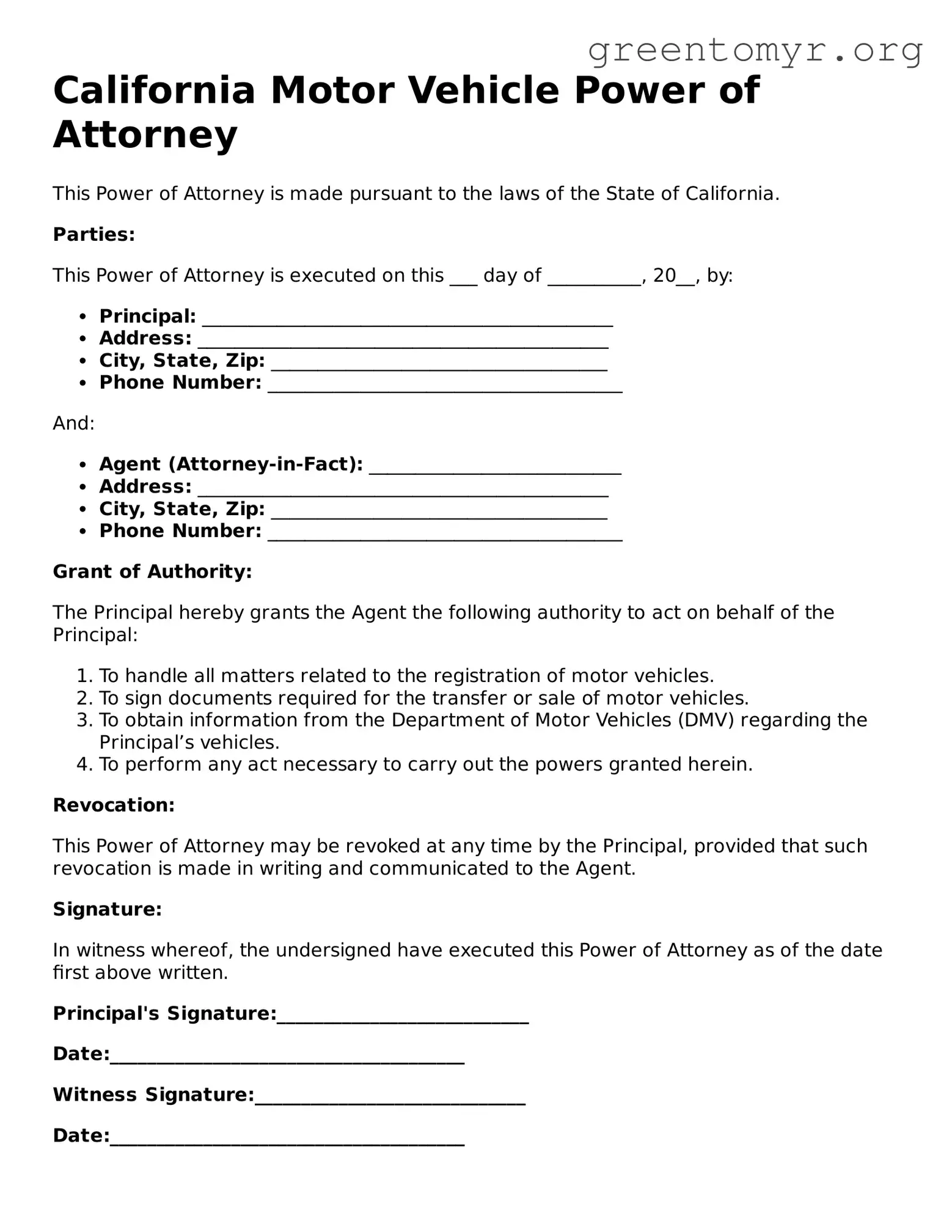California Motor Vehicle Power of Attorney
This Power of Attorney is made pursuant to the laws of the State of California.
Parties:
This Power of Attorney is executed on this ___ day of __________, 20__, by:
- Principal: ____________________________________________
- Address: ____________________________________________
- City, State, Zip: ____________________________________
- Phone Number: ______________________________________
And:
- Agent (Attorney-in-Fact): ___________________________
- Address: ____________________________________________
- City, State, Zip: ____________________________________
- Phone Number: ______________________________________
Grant of Authority:
The Principal hereby grants the Agent the following authority to act on behalf of the Principal:
- To handle all matters related to the registration of motor vehicles.
- To sign documents required for the transfer or sale of motor vehicles.
- To obtain information from the Department of Motor Vehicles (DMV) regarding the Principal’s vehicles.
- To perform any act necessary to carry out the powers granted herein.
Revocation:
This Power of Attorney may be revoked at any time by the Principal, provided that such revocation is made in writing and communicated to the Agent.
Signature:
In witness whereof, the undersigned have executed this Power of Attorney as of the date first above written.
Principal's Signature:___________________________
Date:______________________________________
Witness Signature:_____________________________
Date:______________________________________
